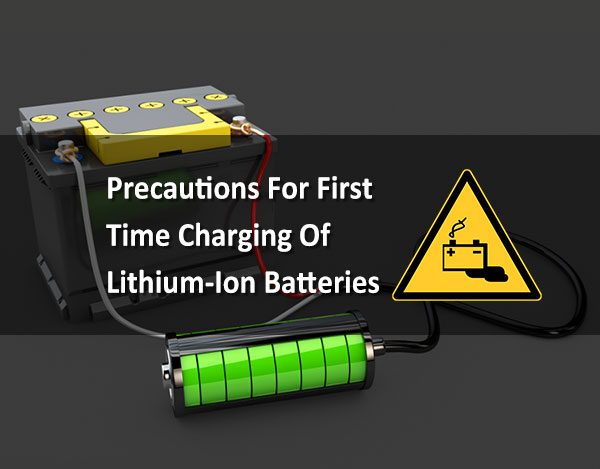The first time charging of lithium batteries seems to bring people a lot of questions. In this regard, it is necessary to have the following common sense.

- Fully charged: There is no “activation” problem when the lithium battery is used for the first time. The reason is that the charging and discharging characteristics of lithium batteries and nickel-metal hydride batteries are very different. The deeper reason is that overcharging will affect the Lithium batteries, especially liquid lithium ion batteries, cause great damage. Therefore, charging should be done according to standard time and standard methods, and do not charge for long periods of time.
The correct way is to separate the lithium battery from the charger immediately after the lithium battery stops charging. Lithium batteries will automatically stop charging after being fully charged (temporarily), and there is no trickle charge that “continues” for a long time. This is the difference between lithium batteries and nickel-metal hydride batteries. After the charger is fully charged, if it is not removed immediately, due to the self-discharge of the battery and the lithium battery protection IC still has a small current flowing, the lithium battery voltage will drop to a rechargeable voltage value and then recharge (because at this time The charger is not removed), after another round of “charging – voltage drop – recharging”, the lithium battery is in the process of countless charge and discharge cycles, which eventually damages the lithium battery and affects the life of the lithium battery.
- The new lithium battery generally has a certain amount of power after it is received, and can be used immediately, instead of having to be charged first and then used. From a theoretical and practical point of view, whether the lithium battery is charged for the first time is “charged after use” or “charged after use”. Use again” has exactly the same effect. There is a limit here. If the factory date is more than half a year, it is best to charge it first, because the power is too low at this time.
- The choice of power-off charging and power-on charging (actually, it is also the difference between plug-in charging and cradle charging methods) does not need to be deliberate, because the impact on battery performance is the same. Some lithium batteries are designed to be charged in the standby state, but this kind of There are relatively few cases.
- Fourth, in terms of consumer electronics, the charging time of lithium batteries is generally 2 to 4 hours. The first charging time of new lithium batteries may be longer, because there is no capacity loss, and the result is fully charged. It is also useless. The reasons have been mentioned above. If you have to say that it has any effect, it is also a side effect.
The first charging time of lithium batteries is often transformed into the concept of “activation”. In some lithium battery manuals, the requirement to use lithium batteries for three full charge and discharges for the first time seems to be activated, but the real purpose is not the same as the elimination of memory effect of nickel-metal hydride batteries. , This is mainly to eliminate “passivation”, that is, lithium batteries will produce some lithium crystals during the transfer process of up to 3 to 6 months, which will affect the activity. The process of eliminating passivation can be carried out during the first charging of the lithium battery, or it can be done in a normal working environment, and it is not necessary to do it deliberately.




